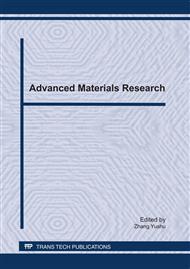p.445
p.450
p.454
p.460
p.465
p.470
p.475
p.479
p.483
Determinition of Optimal Coiling Temperature and Cold Reduction Ratio of Adding P High Strength if Steel
Abstract:
Hot rolled adding P high strength IF steel sheet was used to study the effect of coiling temperature and cold reduction ratio on the microstructures , mechanical properties and textures of experimental steel. The experimental results showed that the recrystallization has finished after cold rolling followed diffrenent cold reduction ratio and coiling temperature was from 550 °C to 600 °C under experimental condition. When the cold reduction ratio was increased, the grain changed fine and uniformity under diffrenent coiling temperature; The yield strength, tensile strength and elongation percentage were approximate 160 MPa, 345 MPa and 35.0 % respectively, under coiling temperature 600 °C and diffrenent cold reduction ratio condition, the plastic strain ratio r value and the strain hardening exponent n value were reached the maximum, respectively, the r value was approximate 1.5, the n value was approximate 0.30. When the coiling temperature was increased, the {111}<110> texture of α skeleton lines was stronger. Therefore, the suggested the optimal coiling temperature is 600 °C, cold reduction ratio was 60 % to 70 %, and it obtains optimally match of high strength and punching property.
Info:
Periodical:
Pages:
465-469
Citation:
Online since:
February 2011
Authors:
Price:
Сopyright:
© 2011 Trans Tech Publications Ltd. All Rights Reserved
Share:
Citation:


